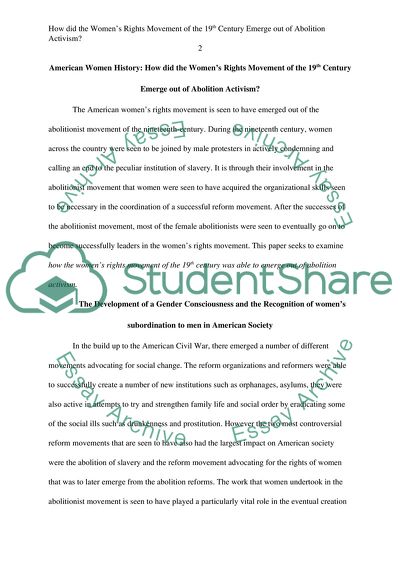Cite this document
(How did the Womens Rights Movement of the 19th Century Emerge out of Abolition Activism Literature review Example | Topics and Well Written Essays - 1750 words - 3, n.d.)
How did the Womens Rights Movement of the 19th Century Emerge out of Abolition Activism Literature review Example | Topics and Well Written Essays - 1750 words - 3. https://studentshare.org/history/1811885-american-women-history
How did the Womens Rights Movement of the 19th Century Emerge out of Abolition Activism Literature review Example | Topics and Well Written Essays - 1750 words - 3. https://studentshare.org/history/1811885-american-women-history
(How Did the Womens Rights Movement of the 19th Century Emerge Out of Abolition Activism Literature Review Example | Topics and Well Written Essays - 1750 Words - 3)
How Did the Womens Rights Movement of the 19th Century Emerge Out of Abolition Activism Literature Review Example | Topics and Well Written Essays - 1750 Words - 3. https://studentshare.org/history/1811885-american-women-history.
How Did the Womens Rights Movement of the 19th Century Emerge Out of Abolition Activism Literature Review Example | Topics and Well Written Essays - 1750 Words - 3. https://studentshare.org/history/1811885-american-women-history.
“How Did the Womens Rights Movement of the 19th Century Emerge Out of Abolition Activism Literature Review Example | Topics and Well Written Essays - 1750 Words - 3”. https://studentshare.org/history/1811885-american-women-history.


